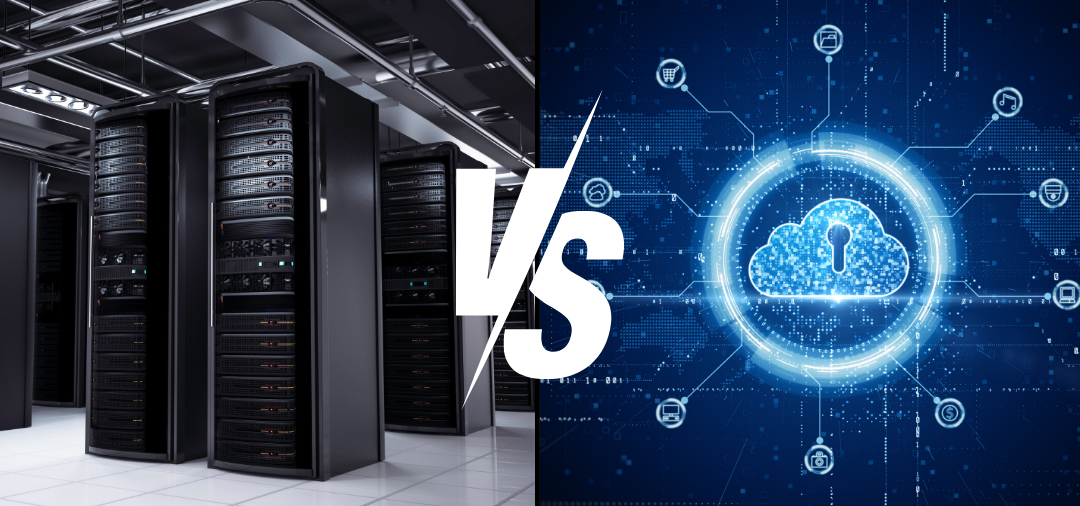The main components of a data center are categorized into three groups: Storage, Compute, and Networking. Storage refers to the media used to house data, and is comprised of tapes, hard disks, and solid-state drives. Compute consists of all the processing power and memory needed to run business applications and services. Networking involves all the routers, controllers, and switches necessary for the interconnection of components and communication of data across the data center. The modern data center is expected to communicate across multiple sites, services, and resources, and balance reliability, security, and efficiency. Data centers can be hosted on-site, or organizations can opt for a cloud-based data center. Each solution offers its own set of distinct advantages.
Advantages of Using an On-Site Data Center
On-site data centers allow an organization to exercise complete control over data, allowing an easier implementation of advanced security measures. On-site deployments align with company policies, making compliance easier to manage. Unlike a cloud-based data center, where internet quality determines the employee and user experience, on-site data centers can continue operations even without internet access. While the initial investment for setting up an on-site data center is significant, the monthly IT costs after deployment are much lower than the monthly subscription for a cloud-based data center.
Advantages of Using the Cloud
Cloud data centers are relatively inexpensive compared to an on-site data center. Cloud solutions offer user-oriented subscription services, like the increasingly popular pay-as-you-go model. This arrangement allows for greater flexibility and scaling than an on-site data center, and resources can be deployed and reallocated much quicker. This eliminates the need for substantial initial investments, and services can be adjusted to fit the budget. The shift to a cloud-based data center reduces the responsibilities and headcount of the IT staff and helps to reduce IT support and maintenance cost as the burden is shifted away from the organization.
Security Considerations
As cybercrime increases exponentially and the cost of a breach skyrockets, the security considerations for a data center are more important than ever. An on-site data center offers far more granular control over data but securing it effectively could increase security and staff costs. This is assuming the organization employs or has access to a cybersecurity professional.
According to the (ISC)2 Cybersecurity Workforce Study, there is a global shortage of 3.4 million workers in cybersecurity. In the US alone, there are 700,000 unfilled cybersecurity positions. This shortage prompts some organizations to push the burden of security into the cloud, but this may not be the solution many think it is. There is still no clear consensus on who should be responsible for the security of a cloud-based data center, with the most popular opinion being that organizations should pursue a shared responsibility model. However, this can often prove inefficient because each team within each party involved has a different objective. This difference in responsibility, viewpoint, and goal can lead to an increase in security incidents in the cloud.
A recent survey from Venafi found that 81% of companies have experienced a cloud security incident in the last year, with 45% reporting they suffered at least four security incidents in the same period. This is especially concerning, as the response time after an incident can vary wildly. With an on-site data center, the response can come as quickly as the responding party can operate. With a cloud-based data center, an attack on the cloud provider can leave an organization open to attack with little way to protect itself.
For example, a recent cross-tenant vulnerability was discovered in AWS that exposed account resources. AWS acted quickly to resolve this before any customers were affected, and most were unaware of it until after remediation steps were taken.
Unfortunately, cloud providers cannot always act this fast. The Log4j vulnerability discovered in December 2021 was one of the most severe vulnerabilities found in recent memory. AWS rolled out several hot patch solutions over the following days, while AWS clients waited for remediation of their cloud assets. However, this proved ineffective. About five months later, a second wave of patching began to address the new vulnerabilities AWS clients were exposed to as a result of the Log4j patching. This left AWS clients vulnerable for nearly six months, with very little they could do but wait and hope they don’t become part of the 81% that experience a cloud-based security incident.
By contrast, at Promethean, we were able to secure our on-site data center within minutes of the vulnerability being made public and had verified our security with our clients within a few hours.
In conclusion, the security considerations surrounding data centers, whether on-site or in the cloud, are of paramount importance in today’s cyber landscape. While on-site data centers offer greater control, they can also come with increased security and staffing costs, given the shortage of cybersecurity professionals. On the other hand, relying solely on the cloud for security is not without challenges, as evidenced by the prevalence of cloud security incidents. The choice between these options should be made with a clear understanding of the organization’s resources and risk tolerance. Vigilance and adaptability are essential in ensuring data security in a rapidly evolving threat environment.
At Promethean, our commitment to swift action, data protection, and clear communication ensures that our clients’ information is safeguarded effectively within our dedicated on-site infrastructure.
For the most up-to-date information about our infrastructure and services, please visit our official website or contact us directly.

